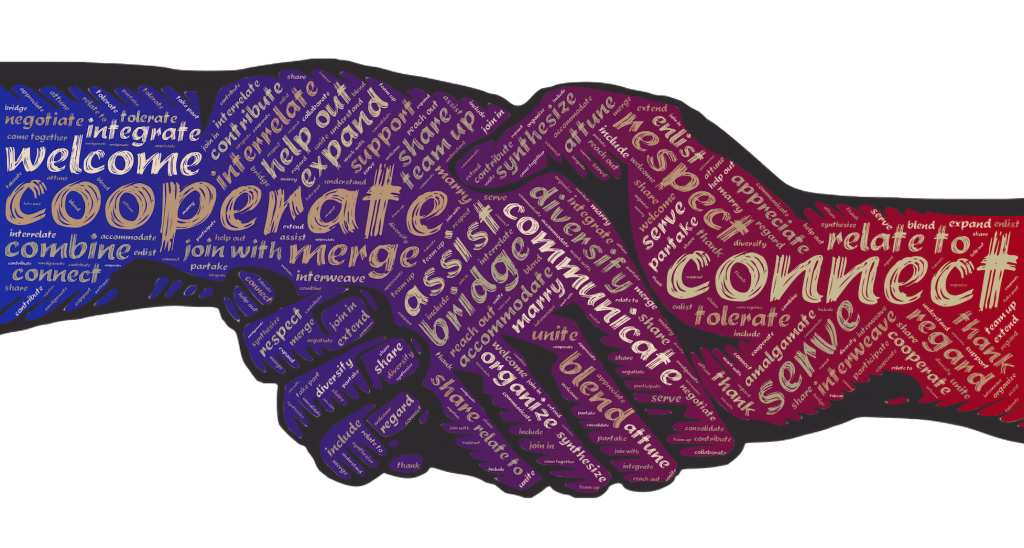
08 Jan God’s Mission in the Face of Global and Asian Realities
We live in a rapidly changing world. With changed realities, it can no longer be business as usual for churches, Christian organizations and Christians engaged in God’s mission. Especially for Christians in Asia who seek to be both effective and faithful according to Biblical mandates, some of our approaches and priorities might need some adjustments.
The tagline of AsiaCMS, Together on the Edge in God’s Mission is formulated in the light of these realities.
First, Christianity is no longer a western faith, but a global phenomenon. Notwithstanding some of the Western trappings, the demographics have dramatically shifted in just one century. In 1910, less than 20% of the world’s Christians lived in the non-Western world. Today, 66% of all Christians live in the global South.[1]
In Asia, Christians constitute 9% of the population, growing at more than twice the rate of general growth. The countries with the fastest growth of Christianity (e.g. Mongolia, Nepal and Cambodia) are all in Asia. The centres of Christianity have decidedly shifted away from the West to Asia, Africa, and the other parts of the global South.
This demographic shift calls for a revised perspective of mission; it is no longer to be viewed as a Western endeavour. Asian countries – India, South Korea, Philippines and China now rank among the top twenty missionary sending countries.
The 600,000 strong Presbyterian Church of Mizoram, India alone sends out 1,000+ cross-cultural mission workers – to other parts of India, and to countries as diverse as Cambodia, Taiwan, Madagascar and the United Kingdom.
At the same time, the largest numbers of least-reached people groups are also located in Asia. Of the 247 least evangelized mega-peoples with over 1 million in population, nearly 75% are found in Asia.
Individuals from these people groups are highly unlikely to personally know a Christian (from any tradition). Mission is more accurately viewed as from everywhere to everywhere.

Second, we are living in times of relentless urbanisation and people movements. In 1990, urban dwellers still constituted less than half of the global population at 43% (2.3 billion). This galloped to 54% (4 billion) in 2015 and is still climbing. Accompanying it are unparalleled migrations where in 2015, 244 million individuals no longer reside in their countries of birth.
Including movements within countries, there are now more than 1 billion migrants worldwide, most of them converging in the cities. Urbanisation combined with migration is sharply transforming the socio-economic structures and ethno-cultural landscapes of cities and even entire nations. God’s mission is increasingly more urban than rural.
This pose both challenges and opportunities. Urbanisation often occurs in ways that are destructive – slums, increased poverty, poor urban services, rising inequality, exclusion, crime and insecurity etc. Hence, the sub-biblical dichotomy between evangelism and social concerns/justice in God’s mission is clearly passé. The “whole gospel” requires integration of gospel proclamation, incarnational lifestyles and ministry approaches that engage holistically with an increasingly complex and needy urban world.
At the same time, the movements of diverse and foreign ethno-cultural people groups to our door-steps offer new opportunities for mission. It is thus regrettable that many churches still delimit “mission” as something to be done “over there” in other nations.
Third, Christianity is a minority faith in practically all Asian countries, many of which are heartlands for one of the three other major faiths (Islam, Hinduism and Buddhism). In these countries, centuries-old faith beliefs and practices are deeply intertwined into the cultures, worldviews, socio-political structures and identities of entire people groups.
Authentic engagement with other faiths and cultures in a spirit of humility is required because the Christian faith is never practiced in cultural vacuums – it is to be appropriately “Asianised.” Religious extremism that sometimes leads to communal violence, and even martyrdom are also harsh realities in parts of Asia. Inter-faith and inter-communal dialogues are hence, not optional, but necessary bridges in these contexts of religious pluralism.
Fourth, countries are increasingly watchful over their boundaries and visas, being well aware of the “creative access” often used by Christians. The growth in Asian Christianity and the increasing numbers of well-qualified local Christians also brings to question the benefits and receptivity to foreign mission workers.
These factors require a rethink about cross-border mission work. In this respect, the impact of the popular short-term mission trips may be maximized despite their shortcomings. Yet, long-termed cross-border, cross-cultural mission workers who live incarnationally among the people will always be needed.
These special individuals are the faces of God’s love, especially in regions where there is little Christian presence. However, the qualifications required of them, such as ethnic backgrounds, academic credentials, skill-sets and cultural adaptability are tighter and higher.
 Fifth, the inequalities of income levels and life opportunities between countries have further widened from the past. This adds to the pressures on sacrificial Christian leaders concerned for the futures of their children, increasing the brain-drain of dedicated Christians from places and countries where they are most needed.
Fifth, the inequalities of income levels and life opportunities between countries have further widened from the past. This adds to the pressures on sacrificial Christian leaders concerned for the futures of their children, increasing the brain-drain of dedicated Christians from places and countries where they are most needed.
Past mission thinking has rightly emphasized on the concepts of the self-supporting national church. However, in an age of global inter-connectivity, answers to sustainability and growth must arguably extend beyond national boundaries.
Smart partnerships can formulate sustainable means of reconnecting and keeping the best national mission leaders and workers in places where they are most needed.
What does all these mean for AsiaCMS?
No single group can claim credit for what has unfolded before us – the growth of Christianity and the Gospel’s inspiring impact across, and from Asia. God has empowered a diverse spectrum of Christian individuals, agencies and denominations to incarnate the truths of the Gospel through words and deeds into a vast breadth of human needs and existence.
Nonetheless, to move ahead in the coming years, the vastness of God’s mission and the changed global realities demand the cooperative efforts of all of God’s people, in all of its breadth, with all of its diverse strengths and resources.
AsiaCMS’s tagline is Together on the Edge in God’s Mission. We cannot do everything, but we can complement the efforts of churches and other Christian organizations in a 3-fold focus:
- Engaging the least-reached people groups with the Gospel
- Engaging in spheres of mission that are under-engaged by national churches
- Facilitating consultations and collaborative research on Asian concerns, particularly questions raised by the Asian Church, to be answered by Asian thinkers.
To break new ground in this 3-fold focus, AsiaCMS will:
1) connect people, organisations and churches,
2) facilitate collaborations, and
3) resource people and organizations through missions education, ministry training and support. We request you to walk with us as we walk alongside mission workers, organizations, and God’s churches across Asia in these areas.
In His mission,
Rev. Chan NamChen (PhD)
Executive Director
[1] All statistics in this article are based on categories and data compiled by the Center for the Study of Global Christianity (www.globalchristianity.org and www.worldchristiandatabase.org) and the International Organisation for Migration (https://www.iom.int).

